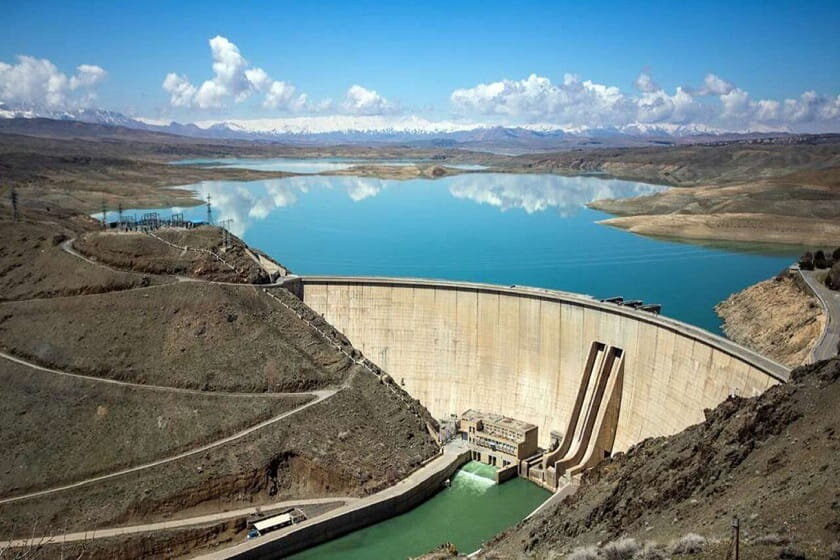Dam reservoirs shrink by 12%

TEHRAN – The total volume of water in dam reservoirs is estimated at about 26.1 billion cubic meters since the beginning of the current water year (September 23, 2021), showing a 12 percent decrease compared to the same period last year.
Iran is located in an arid and semi-arid area and its average rainfall is 250 mm, which is about one-third of the global average.
In terms of the spatial and temporal distribution of rainfall in the country, favorable conditions are not provided to strengthen water resources and proper access to water resources in the country, so the amount of rainfall in desert areas is about 46 mm, which is more than 1,400 mm in the northern provinces. In terms of time, 5 percent of the country’s rainfall occurs in summer, which does not help much in supplying water to summer and permanent crops.
On the other hand, the average rainfall is decreasing over time, as it was estimated at 250 mm for about 53 years, while over the past 13 years it has decreased to 232 mm.
The latest report of the Ministry of Energy indicates a 12 percent reduction in the volume of reservoirs in the country’s dams.
The total volume of water input to the country’s dams since the beginning of the current water year is equal to 20.7 billion cubic meters, which shows a decrease of 3 percent compared to the same period last year.
Out of a total of 183 currently operational dams across Iran, 52 are related to the Caspian Sea catchment area, 12 are based in the Urmia basin, 68 dams are located in the Persian Gulf and the Gulf of Oman watersheds, 34 dams are in the Central Plateau, 11 dams are in Sarakhs catchment basin, and another six dams are located across the eastern boundary basin (Hamoun).
Renewable water resources have decreased by 30 percent over the last four decades, while Iran’s population has increased by about 2.5 times, Qasem Taqizadeh, deputy minister of energy, has said.
Groundwater resources declining
A recent report by Nature Scientific Journal on Iran’s water crisis indicates that from 2002 to 2015, over 74 billion cubic meters have been extracted from aquifers, which is unprecedented and its revival takes thousands of years along with urgent action.
Three Iranian scientists studied 30 basins in the country and realized that the rate of aquifer depletion over a 14-year period has been about 74 billion cubic meters, which is recently published in Nature Scientific Journal.
Also, over-harvesting in 77 percent of Iran has led to more land subsidence and soil salinity. Research and statistics show that the average overdraft from the country's aquifers was about 5.2 billion cubic meters per year.
Mohammad Darvish, head of the environment group in the UNESCO Chair on Social Health that the situation of groundwater resources is worrisome.
The report notes that Iran’s water consumption has increased due to a significant increase in legal and illegal wells, the expansion of agricultural land, and increasing livelihood dependence on water and soil resources in agriculture, livestock, and poultry, which are mainly caused by human factors, Darvish noted.
The statistic is unprecedented, as the total reservoirs of all dams in the country have a capacity of about 50 billion cubic meters; In other words, in the last 14 years, 22 billion cubic meters more than the capacity of all dams have been extracted from the country's underground sources, he explained.
FB/MG

Leave a Comment